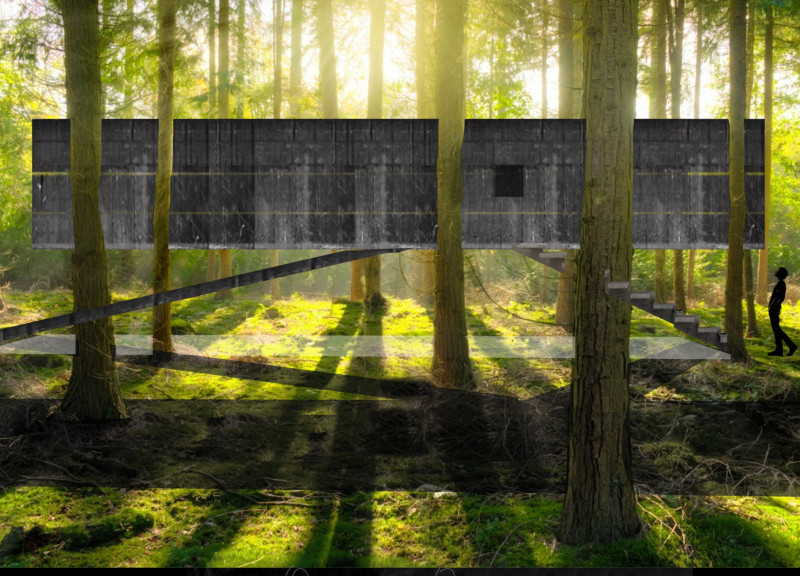5 key facts about this project
The Last Genocide Memorial, named "The Survivor," is a thoughtful reflection on memory and healing. Situated within a forest, the memorial serves as a space for contemplation and remembrance. Its design features a suspended concrete veil, which symbolizes loss while also embodying hope. The overall concept creates a dialogue between the structure and the natural landscape that surrounds it.
Concept and Symbolism
At the core of the design is the idea of a protective barrier that signifies the void left by historical trauma. The way the concrete veil hangs suggests fragility, yet it also conveys strength. This duality helps to express the complex feelings tied to both memory and healing.
Integration with Nature
The memorial is located in a regenerating forest, reinforcing the theme of renewal. The surrounding trees and greenery enhance the significance of the memorial. This connection to nature contrasts with the serious history it commemorates, showing a continuity of life that persists despite past suffering.
Central Element
Inside the veil, a surviving tree stands as a focal point. This living element embodies resilience and continuity, highlighting the relationship between nature and human experience. It acts as a powerful reminder of life enduring through loss and strengthens the memorial's purpose.
Materiality and Spatial Experience
Concrete plays a key role in conveying the memorial's sense of permanence. The design creates an intimate space, inviting visitors to engage in reflection. The combination of the enclosed void and the natural landscape encourages meaningful contemplation, while also honoring significant historical events.
A pathway leads through the forest, guiding visitors toward the memorial. This route allows individuals to experience the contrast between the organic surroundings and the architectural form. The design fosters a sense of connection to both history and nature while encouraging personal reflection.






















































